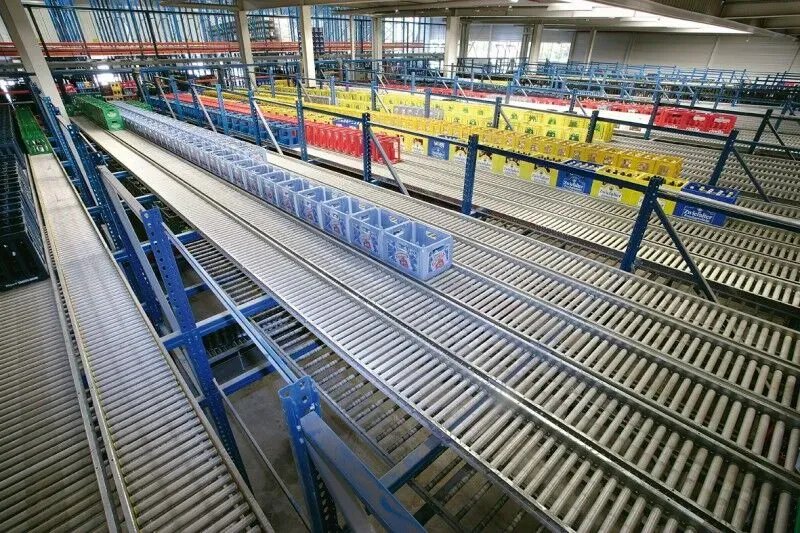Screw Tensioning
One of the simplest and most used techniques for tensioning conveyors is screw tensioning. By tightening or loosening a tensioning screw that is situated at one end of the conveyor, the tension can be changed. It is possible to adjust the belt tension by turning the screw as necessary. Screw tensioning is suited for applications with frequently changing loads because it is simple to use and allows for quick adjustments. Maintaining the proper tension level, however, could occasionally require physical intervention.
Gravity Take-up Tensioning
Gravity take-up tensioning uses gravity’s pull to keep the conveyor belt tight. A tensioning carriage that is connected to it has a weight or counterweight fastened to it. The weight pulls the tensioning carriage, applying the necessary tension as the belt moves. This technique is frequently used on long conveyors with stable loads. Automatic tension adjustment is provided by gravity take-up tensioning, which also requires less upkeep. It might not be appropriate for applications with considerable load changes, though.
Spring Tensioning
Another common method, particularly for smaller conveyors, is spring tensioning. It uses tension springs that are spaced regularly along the conveyor. For the desired tension to be maintained, the springs exert a constant force. Automatic tension adjustment provided by spring tensioning ensures constant belt tension even under fluctuating loads. Installation is comparatively simple and doesn’t require much manual labour. For best performance, it is essential to choose the right springs and keep an eye on their condition.
Hydraulic Tensioning
When handling huge loads, hydraulic tensioning systems are frequently used in heavy-duty conveyors. These systems use hydraulic cylinders to apply and regulate the conveyor belt’s tension. Hydraulic tensioning is suited for applications with high load changes because it allows precise and customisable tension management. For effective operation, the system can be automated and combined with other controllers. However, hydraulic tensioning calls for more intricate installation and maintenance steps, such as monitoring hydraulic fluid and stopping leaks.
Automatic Tensioning Systems
Since they enable continuous monitoring and adjustment of conveyor belt tension, automatic tensioning systems have grown in popularity. These systems use sensors to gauge the belt’s tension and make the necessary adjustments. They might be based on load cells, strain gauges, or optical sensors, among other principles. Belt slippage is decreased and downtime is minimised with the help of real-time tension control provided by automatic tensioning systems. They are especially useful in situations involving fast conveyors or crucial procedures requiring accurate tension control.
For conveyor systems to continue to operate at their best and last as long as possible, proper tensioning is essential. Various variables, including size, load characteristics, and desired level of automation, influence the tensioning method selection. Some of the often employed techniques are screw tensioning, gravity take-up tensioning, spring tensioning, hydraulic tensioning, and automatic tensioning systems. Employing the proper tensioning technique and routinely checking the belt tension, guarantees dependable operation, increased productivity, and lowered maintenance costs.
At L-A-C Logistics Automation, our conveyor expertise is at the core of our operations. With over two decades of experience, our in-house solution team will work with you every step of the way in the design, manufacture, implementation and aftercare of your bespoke conveyor solution. Contact us today to discuss your needs.


